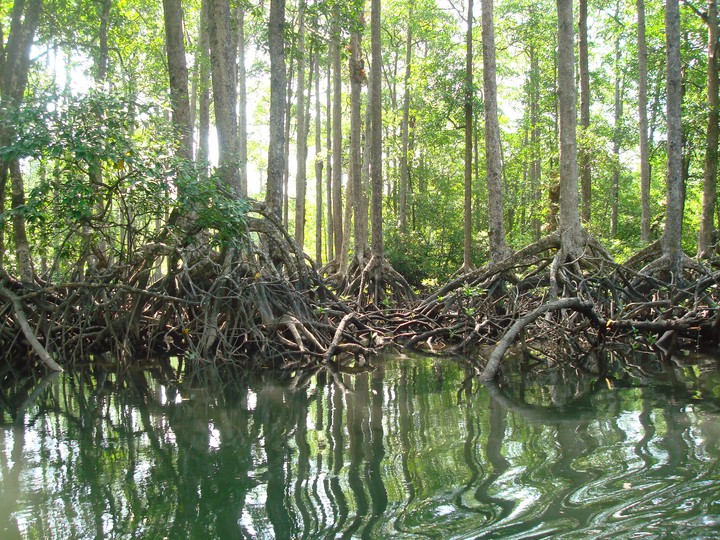Mangrove Outcomes in Certified Community Forests in Myanmar.
 A pristine mangrove forest dominated by Rhizophora mucronata at Lampi Island, Tanintharyi, Myanmar © Maung Maung Than
A pristine mangrove forest dominated by Rhizophora mucronata at Lampi Island, Tanintharyi, Myanmar © Maung Maung Than
MANGROVE OUTCOMES IN CERTIFIED COMMUNITY FORESTS IN MYANMAR (2021—2022).
It is recognised that community-based forest management is a potential mechanism to both prevent forest cover loss whilst securing the livelihoods of communities that depend on them. In Myanmar, community forest certification (CFC) for mangrove forests is gaining traction as a mechanism to protect valuable coastal forests whilst allowing communities to enjoy greater land tenure security and benefits from their numerous ecosystem services. One concrete measure of CFC success is the maintenance or improvement of forest cover in community forests relative to areas that may not be afforded formal protection under the CFC programme. Thus, it is imperative to assess the level of impact of the CFC on mangrove forest cover, as one indicator or programme success.
The project–a collaboration between NUS and Landesa, a charitable US-based non-government organisation working with the Myanmar government to promote land rights reform, poverty alleviation, and conflict over land–intends to track community forest cover in certified community mangrove forests and to provide information that may improve the process of certification and the policies supporting these forestland tenure activities.
The specific objective of this research project is track mangrove forest change in 70 certified community forests of Myanmar, specifically in Ayeyarwady, Yangon, and Tanintharyi Regions. Land cover change will be measured over time using annual Landsat time-series to quantify the amount of mangrove forest change since the late 1980s. Estimates of land cover change will focus on net and gross mangrove changes. The study will include sites that have not been under formally certified community forest management, therefore including counterfactuals to assess whether CFC has led to any improvement in the rate of mangrove cover change since the inception of formalised community forest management.
